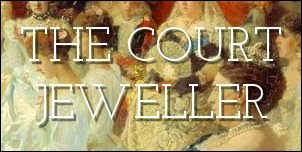
Kate: A Year in Jewels (Part Two)

Sparkling Royal Jewels From Around the World

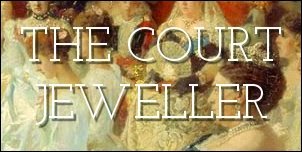
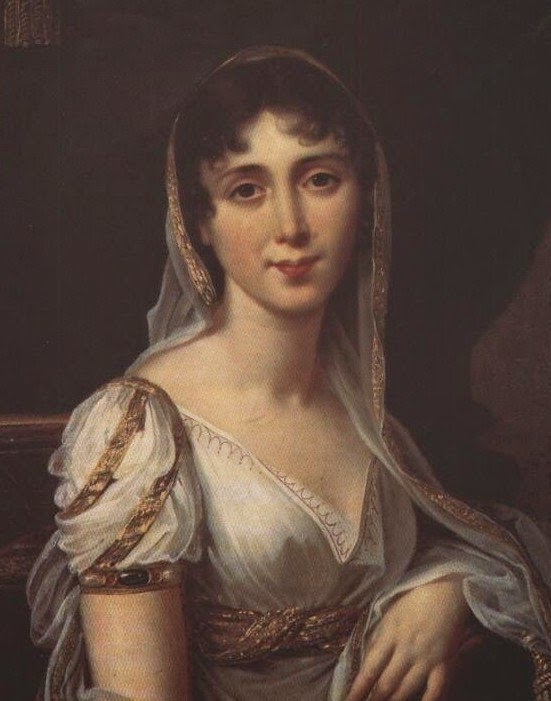 |
| Désirée Clary, ca. 1807 (source) |
1795: In April, Napoléon Bonaparte becomes engaged to Désirée Clary, the daughter of a silk merchant from Marseilles. However, shortly after the engagement, Napoléon meets Joséphine de Beauharnais. The engagement is broken in September, but Désirée remains close to the Bonaparte family, because her sister, Julie, is married to Napoléon’s brother Joseph.
1798: Désirée marries Jean Bernadotte. He is a soldier who had recently served as France’s ambassador in Vienna. Shortly after their marriage, Bernadotte becomes the French Minister of War, and within a year, Désirée gives birth to their only child, Oscar. Napoléon serves as Oscar’s godfather.
1804: Napoléon becomes the Emperor of the French, and he makes Bernadotte a Marshal of the Empire. The new emperor decides that he wants his coronation to be an especially glittering affair, and he gives the Marshals funds to bedeck their wives in new suites of jewels. Bernadotte uses the money to commission a jeweler in Paris (whose name is unfortunately not known today) to create a new parure for Désirée to wear at the imperial coronation.
On December 2, Désirée arrives at the Cathedral of Notre Dame in Paris for the imperial coronation wearing her new parure, including an elaborate necklace, a bracelet, a pair of girandole earrings, and a large brooch. The set is made of diamonds and small rubies, which are cleverly set in groupings to make them look like much larger stones. At this point, the parure does not include a tiara, but it includes a set of hair ornaments.
1806: Now King of Italy, Napoléon rewards Bernadotte for his service in the Battle of Austerlitz with his own Italian principality, making him the Prince of Ponte Corvo. Désirée becomes an Italian princess, and her rubies become part of a royal collection for the first time.
1810: King Carl XIII of Sweden is sixty years old and has no legitimate children. The Swedish Riksdag begins searching for a suitable heir to the throne. First, they select Carl August, a Danish prince; however, he suddenly dies of a stroke during a military exercise in May. As a second choice, the Riksdag elects Bernadotte as the nation’s heir. He accepts, renounces his Italian title, and is formally adopted by Carl XIII, becoming the Crown Prince of Sweden. Désirée is the new crown princess, and the ruby parure becomes a part of the Swedish royal collection.
1811: Although she is now Sweden’s crown princess, Désirée does not adjust well to life in Sweden. She packs up her things, including her jewels, and hightails it back to France.
1818: Carl XIII of Sweden dies in February, and Bernadotte succeeds to the throne as King Carl XIV Johan of Sweden. Désirée also has a new name: Queen Desideria. But she doesn’t use the new moniker, and she still refuses to return to Sweden.
1822: Désirée’s son, Crown Prince Oscar, is in search of a bride. He leaves Sweden and reunites with his mother for the first time in years. Oscar eventually chooses Joséphine of Leuchtenberg, the granddaughter of Désirée’s former love rival, Joséphine de Beauharnais, as his wife. Some think the choice of a bride with French imperial roots was made in part to try to lure Désirée back to Sweden.
1823: Désirée finally returns to Sweden, accompanying Joséphine to Stockholm. Although she initially intends to go straight back to France, she ends up staying in Sweden for the rest of her life, and the rubies finally find a home at the royal court in Stockholm.
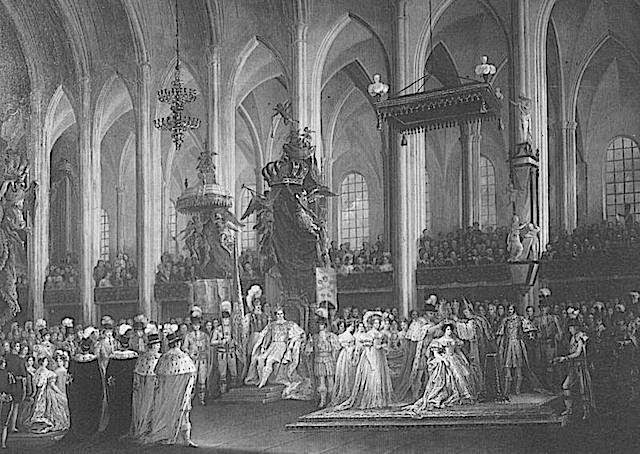 |
| Coronation of Queen Desideria of Sweden (source) |
1829: Désirée is finally crowned in Stockholm. Here’s a photograph of her coronation gown; the illustrations of the event do not clearly show her jewels.
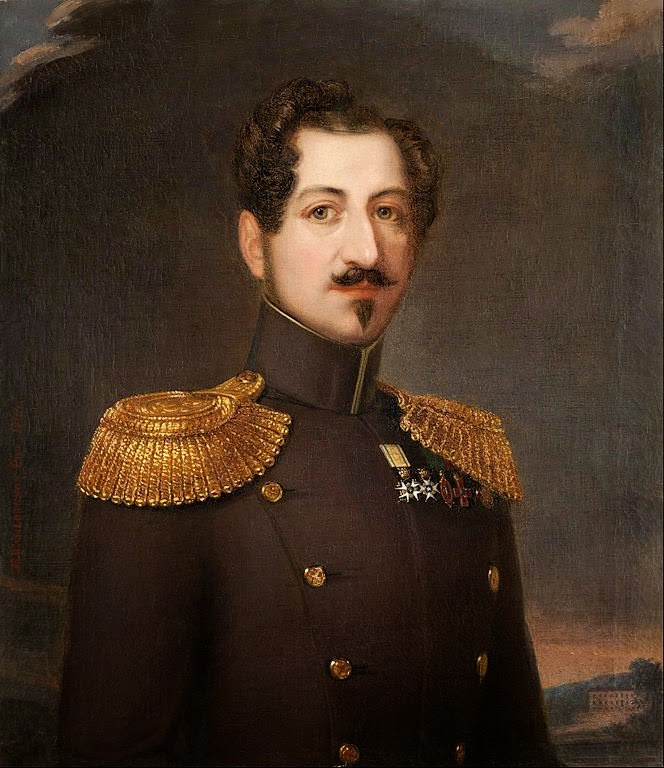 |
| King Oscar I of Sweden (source) |
1844: Carl XIV Johan dies, and Oscar and Joséphine take the throne as King Oscar I and Queen Josefina of Sweden.
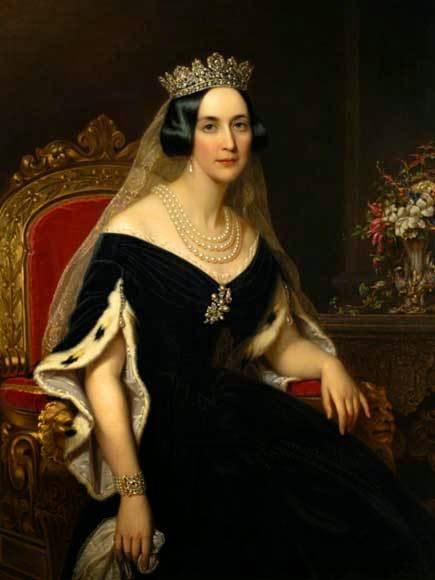 |
| Queen Josefina of Sweden (source) |
1860: Désirée dies in Stockholm in December. She leaves the ruby set to her daughter-in-law, Queen Josefina. They join the Leuchtenberg sapphires and the elaborate diamond tiara she wears above (worn today by the Queen of Norway) in Josefina’s jewelry box.
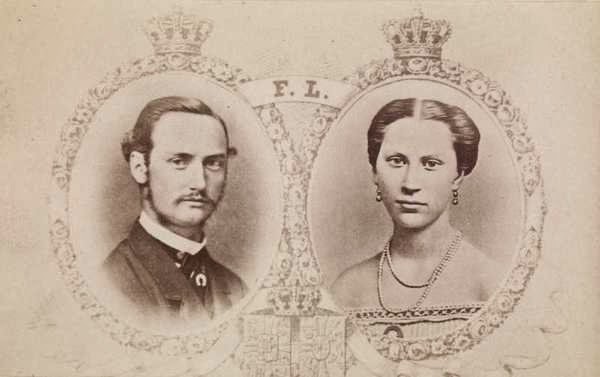 |
| Crown Prince Frederik and Princess Lovisa (source) |
1869: Josefina’s granddaughter, Princess Lovisa, marries Crown Prince Frederik of Denmark. As a wedding present for Lovisa, Josefina selects Désirée’s ruby parure. She notes that she has chosen to give the diamond and ruby set to Lovisa because the jewels are red and white — the colors of the Danish flag. The rubies travel with Lovisa to her new home in Copenhagen.
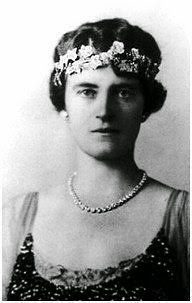 |
| Queen Alexandrine (source) |
1898: Crown Prince Frederik and Crown Princess Lovisa’s son, Prince Christian, marries Alexandrine of Mecklenburg-Schwerin. As a wedding gift, Lovisa gives Alexandrine the hair ornaments from the ruby parure, which have been transformed into a wreath-like tiara. The piece features diamond leaves with small ruby “berries” interspersed throughout. Alexandrine often wears the tiara low across her brow, in the fashionable early twentieth-century bandeau style.
1906: Lovisa, who has retained the rest of the ruby parure, becomes Denmark’s queen consort when her husband takes the throne as King Frederik VIII.
1912: Frederik VIII dies, and Christian and Alexandrine become King Christian X and Queen Alexandrine of Denmark. Alexandrine now has the crown jewels of Denmark, including the elaborate emerald parure, at her disposal; however, Queen Lovisa still keeps the rest of the ruby parure in her personal collection.
1926: Queen Lovisa dies in Copenhagen, and the ruby parure is finally together again as a set when it is inherited by Christian and Alexandrine.
1935: Alexandrine does not keep the ruby set for long. When her son, Crown Prince Frederik, marries Princess Ingrid of Sweden, she gives the entire parure to Ingrid as a wedding present.
1947: King Christian X of Denmark dies, and Frederik and Ingrid become the country’s king and queen consort. The same year, Ingrid gives the ruby tiara a significant makeover. Using material from two brooches, she has the tiara transformed from a small wreath-style bandeau into a large wreath tiara. The piece becomes one of her signature jewels, so much so that you’ll often see the set referred to as “Queen Ingrid’s rubies.”
1950s: Ingrid’s daughter, the young Princess Benedikte, wears the ruby set, including the tiara, the necklace, and the girandole earrings, as a part of a costume.
1966: Ingrid wears the rubies for a number of high-profile gala events throughout the 1960s, including state visits and royal wedding celebrations.
2000: Ingrid dies in November, and she leaves the ruby parure to her grandson, Crown Prince Frederik, with the intention that it should be worn by his future wife. In a twist of fate, Frederik has just met the woman he will eventually marry: he and Mary Donaldson met for the first time at the Olympics held in Sydney that September.
2004: Mary Donaldson wears the ruby set for the first time at a gala dinner held just before her wedding in May. She becomes the first commoner to wear the ruby parure since its original owner, Désirée Clary.
She also wears them at the gala held the night before her wedding, pairing the jewels with a red dress.
2007: Crown Princess Mary wears the rubies to the annual New Year’s Levee in Copenhagen.
2008: Mary wears the tiara at the New Year’s Levee for a second year in a row.
That May, she wears the rubies for Prince Joachim’s wedding to Princess Marie.
2009: Mary selects the tiara for a third year for the New Year’s Court.
2010: Mary wears the tiara again on New Year’s Day. That February, she tasks the Danish jewelers and goldsmiths at Marianne Dulong to restore and adapt the parure. The tiara is made slightly smaller, so that it sits more gracefully atop Mary’s head. Leaves taken from the tiara are transformed into hairpins, and a ring is added to the parure. The studs of the girandole earrings are also adapted so they can also be worn with pearl drops. You can read more about the project here; there’s also a video (in Danish) that features fascinating clips and images of the restoration.
The adapted parure makes its public debut in April, when Mary wears the tiara, the newly-altered earrings, and the brooch at Queen Margrethe’s birthday celebrations.
Mary wears the tiara that summer in Sweden for the wedding of Crown Princess Victoria and Prince Daniel. It’s the first time that Mary takes the tiara on a foreign trip, and it seems especially fitting that she chooses to bring it back to Sweden for the wedding of a Swedish princess whose has “Désirée” among her middle names.
2012: After missing the 2011 New Year’s Levee because of the impending births of the twins, Mary returns to the New Year’s Court the next year and again rings in the new year with her heirloom rubies.
For Queen Margrethe’s ruby jubilee that January, the ruby parure is a natural choice; Mary also wears the new hairpins with the set.
In October, Mary wears the rubies in Luxembourg at Hereditary Grand Duke Guillaume’s pre-wedding gala dinner.
2013: Mary shows off the tiara and modified versions of the necklace and earrings at the next year’s New Year’s Levee.
2014: For the annual new year outing, Mary wears the tiara and the studs of the earrings, plus the brooch attached to a velvet choker.
2015: Mary makes her customary appearance in the parure on New Year’s Day, wearing the pearl version of the earrings and the modified necklace with the tiara.